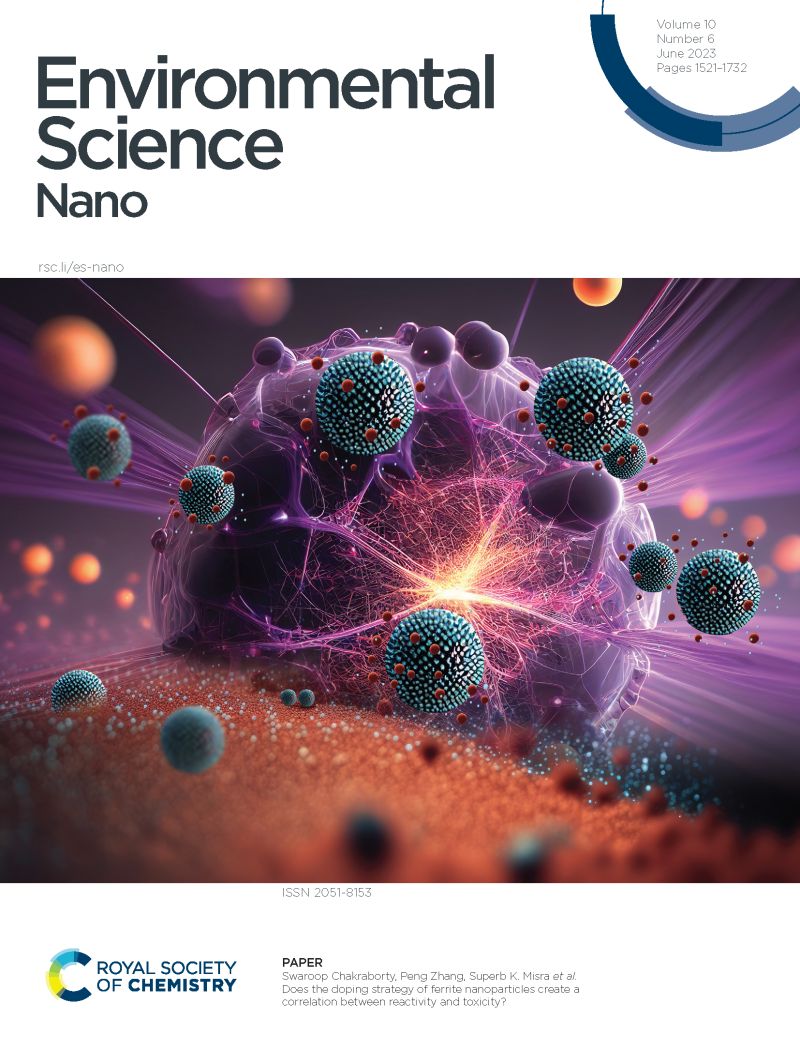Environmentally persistent free radicals on micro- and nano-plastics: a double-edged sword to environmental and biological safety
IF 5.1
2区 环境科学与生态学
Q1 CHEMISTRY, MULTIDISCIPLINARY
引用次数: 0
Abstract
Environmentally persistent free radicals (EPFRs) are a new kind of pollutant that are stable and persistent in the environment and are mainly produced on particles or organics under heating or light irradiation. Aged micro- and nano-plastics (MNPs) are important sources of EPFRs. Existing reviews have focused particularly on the environmental and biological hazards of aged MNPs themselves. Few reviews have focused on the role of EPFRs on aged MNPs, let alone their fate in the environment and their positive applications. This review summarizes the factors that influence the occurrence and formation of EPFRs from aged MNPs, their types and decay periods in the environment, and their conversion into reactive species (RS). This article also discusses the environmental effects of EPFRs on microbial community structure, the cycles of elements (C, N, Cl, S, and P), and the survival of microorganisms, plants, and animals in soil and water. Moreover, the biological effects of EPFRs from aged MNPs are discussed, including oxidative stress, neurotoxicity, reproductive toxicity, respiratory toxicity, and their impact on aging. Meanwhile, the high reactivity of EPFRs can be harnessed to transform them into environmental protection warriors. Hence, the applications of EPFRs in improving environmental pollution are also reviewed, including their use in fixing metals, degrading organic pollutants (including antibiotics and MNPs), and sterilization. Finally, this text provides insights for future research on the dual nature of EPFRs on aged MNPs. This review aims to mitigate the environmental and biological risks of EPFRs and provide a reference for their optimal application.微纳米塑料中的环境持久性自由基:环境和生物安全的双刃剑
环境持久性自由基(environmental persistent free radicals, EPFRs)是一种在环境中具有稳定性和持久性的新型污染物,主要在加热或光照下产生于颗粒或有机物上。老化的微纳米塑料是epfr的重要来源。现有的审查特别侧重于老年MNPs本身的环境和生物危害。很少有评论关注epfr对老年MNPs的作用,更不用说它们在环境中的命运及其积极应用。本文综述了老化MNPs中epfr的发生和形成的影响因素、epfr在环境中的类型和衰变周期,以及epfr向活性物质(RS)的转化。本文还讨论了EPFRs对土壤和水中微生物群落结构、元素(C、N、Cl、S和P)循环以及微生物、植物和动物生存的环境影响。此外,本文还讨论了老年MNPs EPFRs的生物学效应,包括氧化应激、神经毒性、生殖毒性、呼吸毒性及其对衰老的影响。同时,利用epfr的高反应性,可以将其转化为环保战士。因此,本文还综述了epfr在改善环境污染方面的应用,包括其在固定金属、降解有机污染物(包括抗生素和MNPs)和杀菌方面的应用。最后,本文为未来研究老年MNPs epfr的双重性质提供了见解。本文旨在降低epfr的环境和生物风险,为其优化应用提供参考。
本文章由计算机程序翻译,如有差异,请以英文原文为准。
求助全文
约1分钟内获得全文
求助全文
来源期刊

Environmental Science: Nano
CHEMISTRY, MULTIDISCIPLINARY-ENVIRONMENTAL SCIENCES
CiteScore
12.20
自引率
5.50%
发文量
290
审稿时长
2.1 months
期刊介绍:
Environmental Science: Nano serves as a comprehensive and high-impact peer-reviewed source of information on the design and demonstration of engineered nanomaterials for environment-based applications. It also covers the interactions between engineered, natural, and incidental nanomaterials with biological and environmental systems. This scope includes, but is not limited to, the following topic areas:
Novel nanomaterial-based applications for water, air, soil, food, and energy sustainability
Nanomaterial interactions with biological systems and nanotoxicology
Environmental fate, reactivity, and transformations of nanoscale materials
Nanoscale processes in the environment
Sustainable nanotechnology including rational nanomaterial design, life cycle assessment, risk/benefit analysis
 求助内容:
求助内容: 应助结果提醒方式:
应助结果提醒方式:


